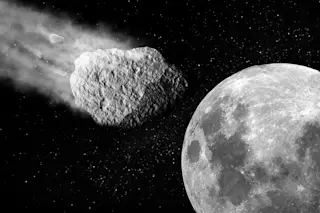WT1109F bursts into flames as it's incinerated by Earth's atmosphere. (Credit: Astronomy Center/YouTube) A mysterious object hurtling toward Earth on Friday the 13^th was plenty of fodder to provoke superstitious speculation. Fortunately, for space observers who serve as sentinels of the skies, it was hardly a surprise, or matter of luck, when a chunk of debris dubbed WT1190F burned up in Earth’s atmosphere early Friday morning over the southern coast of Sri Lanka. Astronomers, who caught the brief fireworks show on camera, knew a rendezvous with the so-called ‘WTF’ hunk of space junk was imminent weeks ago, but some news outlets still couldn’t resist getting “mysterious UFO” in a headline.
WT1190F was believed to be a discarded rocket booster about 6 feet in diameter, according to scientists’ calculations. The Catalina Sky Survey at the University of Arizona first observed the hunk of junk back in 2013, and observers spotted the ...














